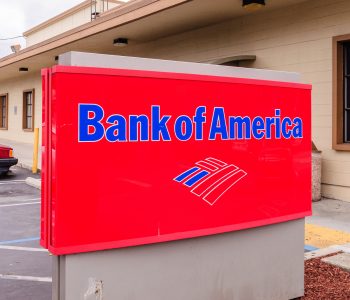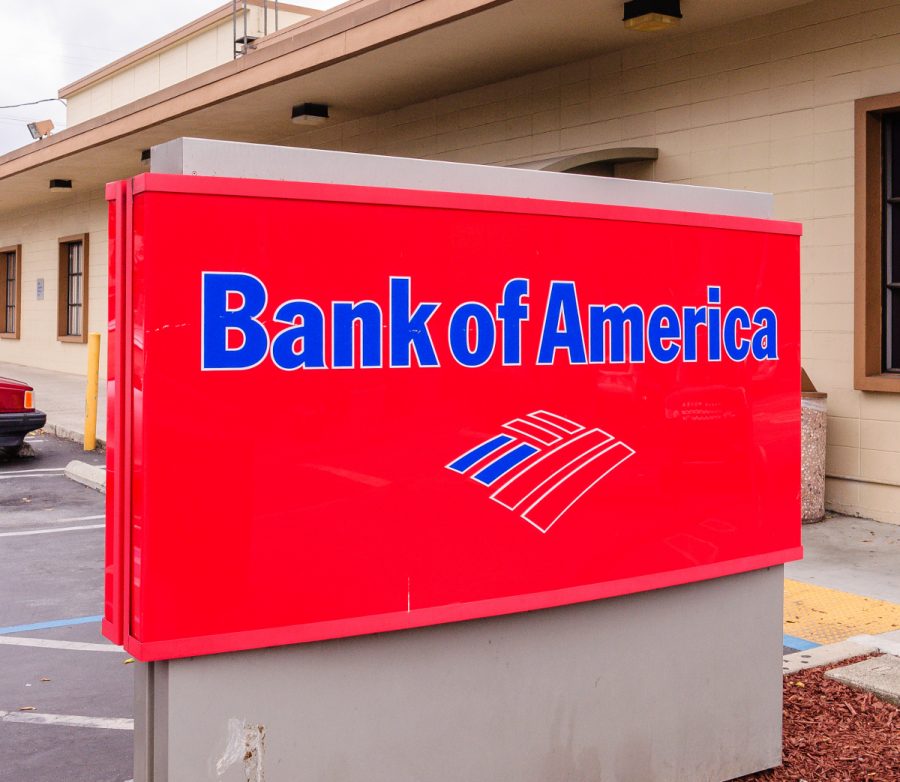BAC Stock: Dividend History and What to Expect in 2017

What to Expect from BAC Stock in 2017
Bank of America Corp (NYSE:BAC) was founded in San Francisco more than 100 years ago. It started as a very small company, but through many mergers and acquisitions has become one of the largest financial institutions in the U.S. based on assets. Its divisions include Consumer Banking, Global Wealth and Investment Management, Private Wealth Management, and Risk Management. Despite its name, Bank of America operates globally—which, as always, provides diversification.
With its long history, it should come as no surprise that BAC stockholders have been heavily rewarded through stock price gains and dividends. Today’s article features a more in-depth look at the company, detailing things such as if BAC stock will increase its dividend in 2017, BAC stock’s price history, and BAC stock predictions for 2017.
- BAC Stock Price History
- Bank of America Earnings Predictions
- BAC Stock Dividend History
- Will BAC Stock Increase Its Dividend in 2017?
- Bank of America Stock Split History
- Will BAC Stock Split in 2017?
#1 BAC Stock Price History
BAC stock has performed very well over the last five years, with $100,000 then amounting to $329,790 now; this includes both stock price gains and the dividend paid out. This is quite an impressive return, and very unusual as well, because such returns tend to not be seen in such a short period from a large company such as Bank of America.
Let’s take a deeper look into the company and see if it’s worth your time an investment.
#2 Bank of America Earnings Predictions
Before getting into the projected earnings, let’s take a look at the past earnings over the last few years. Why? Because doing so serves as a safety measure to ensure that the company has been growing. Projected earnings should be also higher than they were when last reported if a company is to be worth consideration.
If projected earnings are lower than past earnings, then the company has a problem. This could be higher internal fees, restructuring costs, or poor management. The eventual impact of such issues is the stock price trading lower and the dividend potentially remaining flat or being cut. Investors desire a company which has experienced an upward trend in earnings and is likely to continue to do so.
Below are the annual earnings for the past four years:
| Year | Annual Reported Earnings |
| 2013 | $0.90 |
| 2014 | $0.36 |
| 2015 | $1.31 |
| 2016 | $1.50 |
As you can tell from the table, earnings have been growing, with the exception of 2014. Even though there is a year of negative growth, the overall trend is still on the side of growth. However, it is important to consider why the earnings in 2014 were down; the company was increasing the amount of capital and liquidity levels. Therefore, more money was set aside to create a better balance sheet. There were a few one-time write-downs that affected annual earnings, but these are nothing for investors to be concerned about due to the overall trend. (Source: “Bank of America Reports Fourth-quarter 2014 Net Income of $3.1 Billion, or $0.25 per Diluted Share,” Bank of America Corp, January 15, 2015.)
All that said, let’s take a look at projected earnings. The table below features the projected earnings for the period of 2017 to 2020:
| Year | Forecasted Annual Earnings |
| 2017 | $1.81 |
| 2018 | $2.18 |
| 2019 | $2.47 |
| 2020 | $2.86 |
Bank of America’s earnings are expected to continue to grow, which is great for shareholders. This expectation could also result in the share price trading higher and future dividend hikes.
#3 BAC Stock Dividend History
BAC stock pays its dividend on a quarterly basis, traditionally every March, June, September, and December. It is notable for its dividend growth, with investors gradually receiving more and resulting in a higher dividend yield from the capital invested.
Below is a table of the dividend over the past five years:
| Ex-Dividend Date | Amount | Change | Declaration Date | Record Date | Payment Date |
| May 31, 2017 | $0.075 | N/A | May 1, 2017 | June 2, 2017 | June 30, 2017 |
| March 1, 2017 | $0.075 | N/A | January 26, 2017 | March 3, 2017 | March 31, 2017 |
| November 30, 2016 | $0.075 | N/A | October 28, 2016 | December 2, 2016 | December 30, 2016 |
| August 31, 2016 | $0.075 | +50% | July 28, 2016 | September 2, 2016 | September 23, 2016 |
| June 1, 2016 | $0.05 | N/A | April 29, 2016 | June 3, 2016 | June 24, 2016 |
| March 4, 2015 | $0.05 | N/A | February 10, 2015 | March 6, 2015 | March 27, 2015 |
| December 3, 2014 | $0.05 | N/A | October 23, 2014 | December 5, 2014 | December 26, 2014 |
| September 3, 2014 | $0.05 | +400% | August 6, 2014 | September 5, 2014 | September 26, 2014 |
| June 20, 2014 | $0.01 | N/A | June 18, 2014 | June 24, 2014 | June 30, 2014 |
| March 5, 2014 | $0.01 | N/A | February 11, 2014 | March 7, 2014 | March 28, 2014 |
| December 4, 2013 | $0.01 | N/A | October 24, 2013 | December 6, 2013 | December 27, 2013 |
| September 4, 2013 | $0.01 | N/A | July 24, 2013 | September 6, 2013 | September 27, 2013 |
| June 5, 2013 | $0.01 | N/A | April 30, 2013 | June 7, 2013 | June 28, 2013 |
| February 27, 2013 | $0.01 | N/A | January 23, 2013 | March 1, 2013 | March 22, 2013 |
| December 5, 2012 | $0.01 | N/A | October 24, 2012 | December 7, 2012 | December 28, 2012 |
| September 5, 2012 | $0.01 | N/A | July 11, 2012 | September 7, 2012 | September 28, 2012 |
| May 30, 2012 | $0.01 | N/A | April 11, 2012 | June 1, 2012 | June 22, 2012 |
| February 29, 2012 | $0.01 | N/A | January 11, 2012 | March 2, 2012 | March 23, 2012 |
| November 30, 2011 | $0.01 | N/A | November 18, 2011 | December 2, 2011 | December 23, 2011 |
| August 31, 2011 | $0.01 | N/A | August 22, 2011 | September 2, 2011 | September 23, 2011 |
#4 Will BAC Stock Increase Its Dividend in 2017?
To determine if the dividend can continue to grow, consider the payout ratio. This is the percentage of earnings that is distributed via the dividend. The most important thing is to ensure that there is enough money being both paid to investors and reinvested back into the business. That reinvestment will generate a higher growth in earnings, supporting a higher dividend over time.
Once business expenses such as employee wages are accounted for, most of the remaining money is paid to investors, with the business keeping a smaller portion. In the case of BAC stock, 17% of each dollar of earnings is paid as a dividend, which is very modest. For comparison, most large Fortune 500 companies pay out close to 50% of their earnings.
There are two reasons for the high probability of the dividend increasing in 2017 not just once, but twice. First, the payout ratio could easily increase without impacting the company’s financial standing at all. Second, the company could keep the 17% payout ratio as-is, and with higher earnings expected, a higher dividend is supported.
Hikes will not only impact the dividend in 2017, but should also push towards further increases in the coming years. And based on the previous dividend increases, it’s clear that shareholders are openly rewarded.
#5 Bank of America Stock Split History
In the history of BAC stock, there have been a total of three stock splits, all at a ratio of two-for-one. But why would a company split its stock? And how does a stock split work?
When a company splits its stock, the market cap remains unchanged. Shareholders now own more shares, but the value of each individual share decreases. For instance, let’s say you owned 100 shares of a stock that was trading at $50.00 per share when the company announced a two-for-one stock split. You would then own 200 shares, trading at $25.00 apiece. The value of the total investment remains $5,000 both before and after the split.
A stock split could occur because more investors would be attracted to a lower stock trading higher than a higher one. This is because the shares become more affordable for everyday retail investors. The increase in demand also helps to support the stock price’s stability and a higher trading price, with more people looking at the company.
Another reason for a stock split occurring is due to more shares outstanding, which results in greater daily volume. This benefits investors looking to get into and out of the company as quickly as possible. The result is less volatility when a trade is made and a smaller bid and ask spread, which means a greater probability of traders generating a revenue.
Below is a table of the stock split history of BAC stock:
| Date | Ratio |
| November 21, 1986 | 2-for-1 |
| February 28, 1997 | 2-for-1 |
| August 30, 2004 | 2-for-1 |
#6 Will BAC Stock Split in 2017?
A good indicator to determine if a stock split is going to occur is the previous price that the stock split occurred at. This will provide an idea of which price is appropriate for a split within that organization.
When the stock split occurred in 1997, the stock price of BAC was north of $100.00. The most recent split in 2004 was done at a price slightly above $85.00. The current trading price has been between $14.00 and $24.00 per share, which is nowhere near the previous stock splits.
Based on the company’s prior behavior and the above reasons, a stock split may not happen in 2017. BAC stock’s trading price is still affordable, and I would become more bullish if it was trading at a higher price point. However, the company could surprise me and the markets with a split all the same; time will tell.
Also Read:
3 Dividend Stocks That Could Double Their Yield in 2017
5 Best Warren Buffett Retirement Stocks
The Bottom Line on BAC Stock in 2017
One positive that should impact the bank is improving net margins as the bank connects new and old customers alike. For instance, there are the customers that have put some cash aside for a rainy day or retirement and are looking to earn an interest rate on their funds. These are “savers” and would get paid for their decision.
On the other end of the spectrum are those that need funds for a new home or business venture. These people would receive a loan using the savers’ money. Then use the same funds and distribute a loan for individuals looking for credit and the bank would earn interest income. The interest on the loan is higher than the one the savers are receiving, with the difference being the net interest margin.
The interest rates are determined by the U.S. Federal Reserve. When times are good and the economy is improving, the benchmark rate is increased, and the reverse is also true. High and rising interest rates would improve Bank of America’s net interest margins.
That said, the bank is already in the sweet spot since the benchmark interest rate is sitting on the lower end of things. At present, interest rates in the U.S. are increasing; since 2015, there have been three rate hikes, which could be just the beginning since interest rates can only go up. (Source: “United States Fed Funds Rate,” Trading Economics, last accessed August 14, 2017.)
Therefore, with dividend growth and better net interest margins to look forward to, there could be a lot more investors looking to own BAC stock. But remember that it is important to consider all aspects of the company before deploying capital, so there are no surprises in regards to investment returns.












